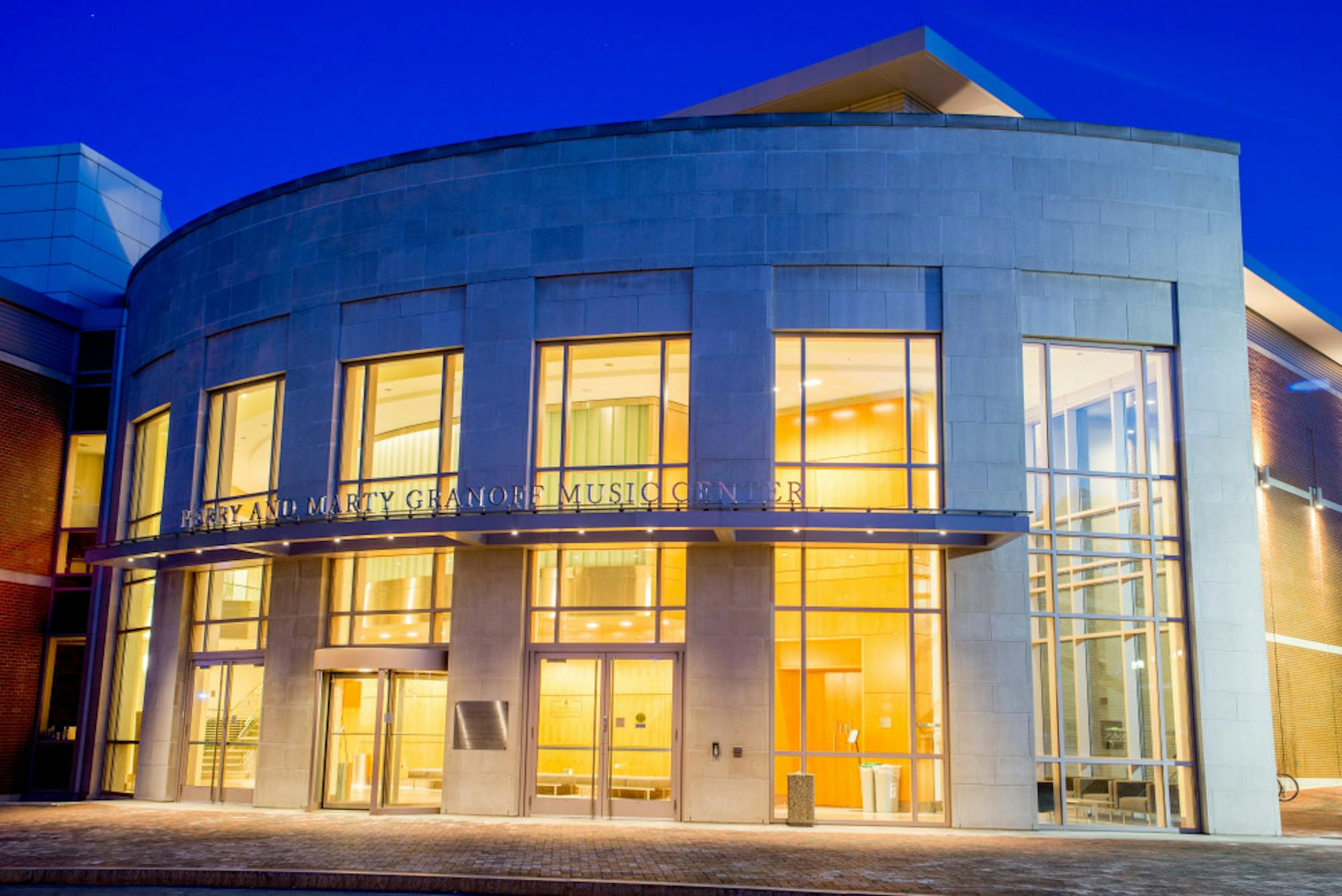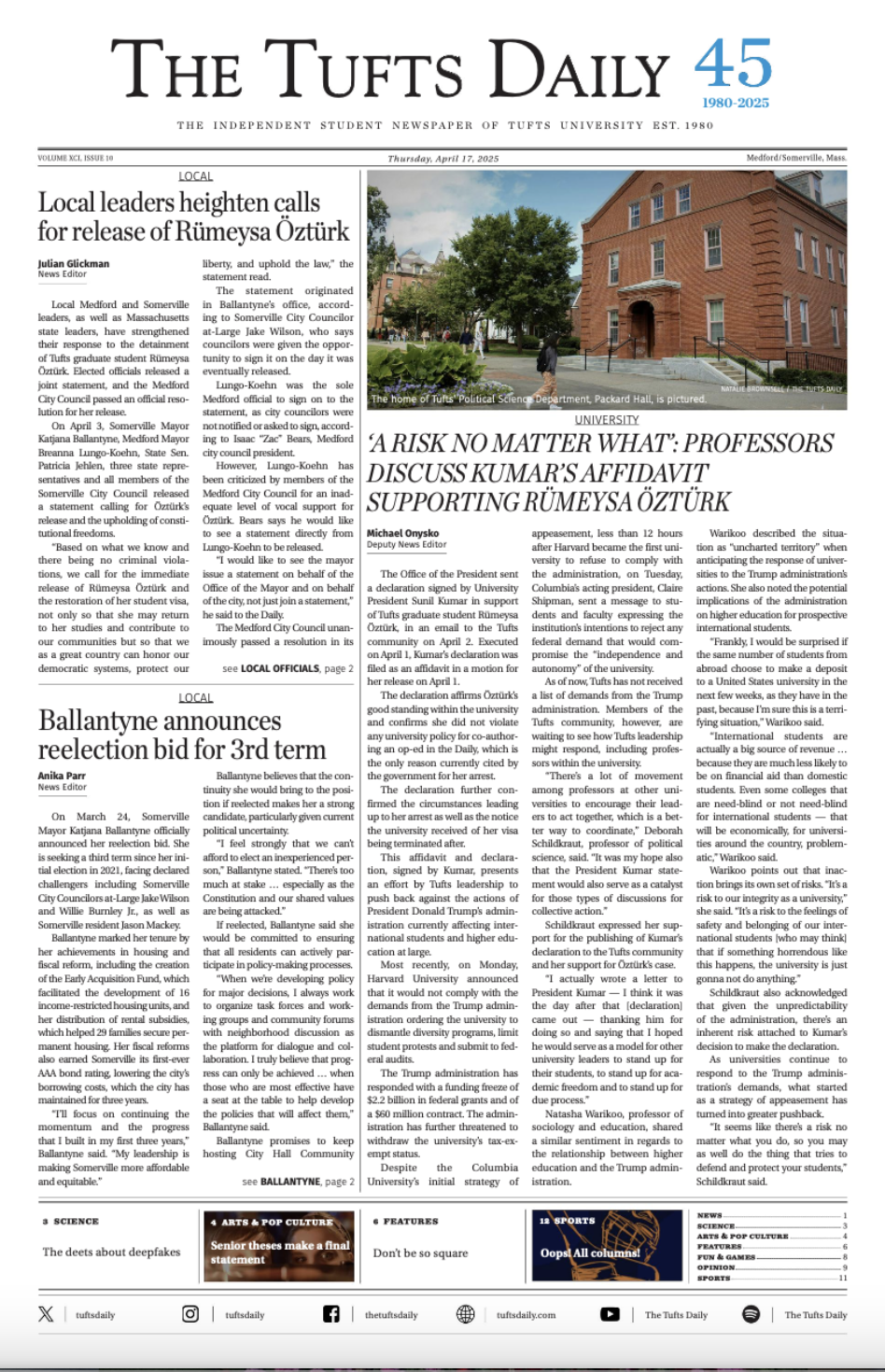Since the launch of the Musical Instrument Engineering program in 1998, Tufts has been bridging two constantly evolving fields: music and technology. According to its website, the program, now called the Music Engineering program, expanded in 2011 to include music recording and production and electronic instrument design as a part of its curriculum. However, the minor in music engineering is a more recent development. Paul Lehrman, director of the Music Engineering program, started teaching a course in electronic musical instrument design in 2001. Lehrman created a formal minor in music engineering in 2011 with the help of Chris Rogers, who is co-director of the music engineering program and a mechanical engineering professor, and Dana Messina (E '83), a former CEO of Steinway Musical Instruments.
The minor in music engineering is available to students in both the School of Arts and Sciences and the School of Engineering. Lehrman explained that students who pursue the minor choose from three tracks: acoustic musical instrument design, electronic musical instrument design and music recording and production. According to Lehrman, between four and eight students graduate with the minor each year, and generally two-thirds of them are in the School of Engineering.
However, Lehrman and Rogers hope to expand the program in coming years. Lehrman stated that a course called Introduction to Music and Engineering, which will be a requirement for the minor, will be available in the fall of 2019.
“We’re making it more inclusive, so that students have a wider variety of courses that they can take to satisfy the minor,” Lehrman said.
Lehrman and Rogers are also looking to make the minor more accessible to students in the School of Arts and Sciences.
“When it’s all engineering, there’s all sorts of pre-requisites that Arts and Sciences [students] wouldn’t typically take, like four semesters of calculus … so the idea is that we’re redesigning it … The new minor we’re setting up … will give students more flexibility,” Rogers said.
Students design their own musical instruments in many music engineering courses
Rogers said that the minor in music engineering emphasizes hands-on projects and that most of the core courses in each track involve students creating their own musical instruments.
“The idea behind all the classes is that they have to design, fabricate, compose for and perform on an instrument,” Rogers said.
Sponsorships and outside funding from instrument manufacturing companies allow students to help design specific instruments. These companies include Zildjian, a cymbal manufacturer, and piano companies QRS Music Technologies and Steinway & Sons. According to Lehrman, students are currently working on a self-playing violin for QRS Music Technologies.
James Hoder, a senior who is minoring in music engineering, spoke about his involvement in the project for QRS Music Technologies.
"I got involved with the Violin Project after taking Professor Lehrman’s Computer Tools [for] Musicians class for the Music Engineering Minor." he told the Daily in an email. "It is a violin body with a robotically controlled bow moving across it, to give the appearance that the violin plays itself. The sound of the violin is actually produced using the Bela electronic synthesizer, which sends audio to a surface transducer speaker, which sends vibrations through the violin body. Thereby, the body of the violin is used as the amplifier for the sound produced by the synthesizer, just as a real violin body is used as the amplifier for the sound produced by a string."
Hoder explained that his contributions included programming the synthesizer and utilizing the transducer.
In addition to the self-playing violin, past projects have involved creating a system to determine where a low-volume cymbal was being hit for Zildjian.
“They wanted to devise a method of determining where the cymbal was being hit when you hit it so [it could be used] with an electronic drum set … so we had students working on that, and we came up with a system, which we actually got a patent on,” Lehrman said.
Rogers also recalled a project for Steinway & Sons that examined the effect of temperature and humidity on pianos.
“What we found is that as you start to get changes in humidity, the time between when you hit the key and the hammer hits, the string changes by a couple of milliseconds, which is enough for the player to think it goes from being a bright, responsive piano to a sluggish piano," he explained.
Electronic Musical Instrument Design course focuses on collaboration, construction
Lehrman said that group work and the interdisciplinary connection between music and engineering are important aspects of the minor in music engineering. In his Electronic Musical Instrument Design course, Lehrman teaches students about music synthesis, electronics, mechanical design and programming. Additionally, students work in teams to build electronic musical instruments, which they present and play at the end of the semester.
“The students work on projects in teams, and each team is set up so they have a cross section of skills ... There is nobody who comes into the class who can do everything, so the students work together with complementary skill sets and teach each other,” Lehrman said.
Rogers also emphasized the importance of group work in allowing students to learn from each other.
“If you pull students with completely different knowledge sets and get them to work together, you can make a really cool product ... better [than] if you had two students with the same knowledge set. I look for opportunities where I can take people that have knowledge that my engineers don’t and have them figure out how to work together and build cool things,” Rogers said.
Bridging engineering and art: Music and the Art of Engineering
Electrical and Computer Engineering Professor Jeff Hopwood highlighted the connection between music and engineering in his Introduction to Engineering course, "Music and the Art of Engineering." Though the course is not a requirement for the minor in music engineering, Hopwood hopes it will generate interest in the minor.
“We’d like to make it part of the music engineering minor, but the problem is it’s a first year course, so if somebody decided they wanted to do the minor later they would have to go backward and do this … so I think of it as a way of generating … interest in music and engineering together,” Hopwood said.
According to Hopwood, the course is divided into three parts. After learning about the general science and math of sound, students begin a unit on the creation of sound through electronics, in which they design a functional electronic musical instrument that they must play in a class presentation. Finally, students learn about computer based music production and then complete a final project. Throughout the course, Hopwood places a strong emphasis on the importance of hands-on learning.
“My philosophy … is [that] people actually learn when they’re doing it,” Hopwood said.
First-year Sam Cohen, who took the class last fall, appreciated the aspects of the class that facilitated active learning.
“It’s really refreshing to have a bit of lecture up front and then [to] go immediately into using the concepts you learned just minutes before, and applying them, and seeing what happens when you do,” Cohen said.
First-year Zev Pogrebin, who took the class with Cohen, enjoyed the class’ exploration of the unique connection between engineering and music.
“I’ve always been interested in things that have both a creative and a technical element to them ... I think sound engineering or recording was the thing that really got me to electrical engineering in the first place,” Pogrebin said.
Cohen and Pogrebin worked together to build a synthesizer as their electronic musical instrument and improved the synthesizer for their final project. Even after the class ended, they continued to work on the synthesizer.
“As of now it’s mostly an experiment just to see what kind of improvements can be made, but we always design our products with the intent of making them manufacturable,” Cohen said.
Both Cohen and Pogrebin are majoring in electrical engineering, but their different interests within the field allowed them to work together.
“I like music, but my interest in how it was made came from Zev, and that’s what inspired us to build the synthesizer, the second version and who knows what after that,” Cohen said.
An interdisciplinary minor
Lehrman noted that through this variety in previous musical experience and diversity in fields of study, the interdisciplinary nature of the music engineering minor allows students who are interested in both engineering and music to pursue both subjects and explore their complementary nature.
“It’s remarkable how many engineers are really good musicians … and making musical instruments, making recordings, is a really good way of teaching other skills, like programming, mechanical [design] and electronics, because you come out with something that’s really tangible and really enjoyable,” Lehrman said.
Hoder said that this interdisciplinary element is a large part of why he decided to pursue the minor.
"I have a great interest in electronics and circuit design, and I was looking for a means to apply my electrical engineering major to my interest in creating music. So, I began to pursue the minor with a concentration in electronic instrument design in order to merge my electronics education with my passion for music," he said.
CORRECTION: An earlier version of this article stated that students build instruments in the "Computer Tools for Musicians" course. In fact, students use computers in this course to produce music, but do not design or build instruments. The article has been updated to reflect this change. The Daily regrets this error.
Music engineering minor brings together technology, art

The Granoff Music Center is pictured on May 7, 2014.





